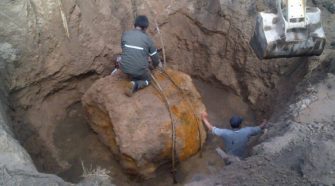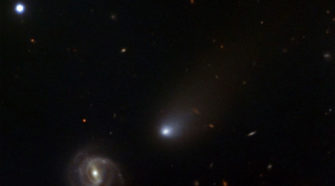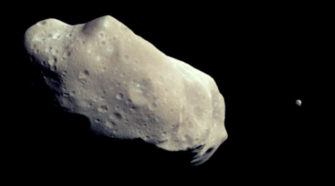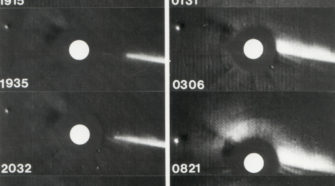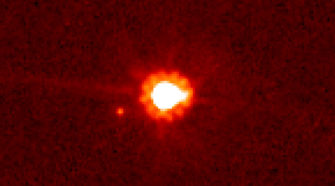This Week in History: September 6-12
SEPTEMBER 6, 1618: The German astronomer and mathematician Johannes Kepler observes Comet 1618 I (new style C/1618 Q1) – the first of three “Great Comets” that appeared that year – through a small telescope, the first recorded telescopic observation of a comet. SEPTEMBER 8, 1991: Tom Gehrels with the Spacewatch program in Arizona discovers the …
Comet of the Week: 2I/Borisov I/2019 Q4
Perihelion: 2019 August 8.55, q = 2.007 AU According to our present understanding of how the solar system formed and evolved, all the various comets, including those passing through the inner solar system as well as those in the Kuiper Belt and the Oort Cloud, are the “leftovers” from the planet formation process. Over the …
Special Topic: “Small Bodies” Moons
The “Special Topics” presentation four weeks ago was on the subject of the small moons of the various planets in the solar system. It would seem reasonable to think that the bodies that possess moons don’t stop with the major planets, but that many of the “small bodies” that are the focus of “Ice and …
This Week in History: August 30-September 5
AUGUST 30, 1979: The SOLWIND coronagraph aboard the U.S. Defense Department’s P78-1 satellite records images of a bright comet approaching the sun, and then disintegrating. This comet, the first comet ever to be discovered from space, turned out to be a Kreutz sungrazer, and was the first of several comets discovered by SOLWIND prior to …
Comet of the Week: SOLWIND 1 1979 XI
Perihelion: 1979 August 30.95, q = 0.005 AU The very first comet I ever observed, Comet Tago-Sato-Kosaka 1969g – a previous “Comet of the Week” – was also the first comet ever to be observed from space, an event which took place in mid-January 1970. Since that time many, many comets have been observed by …
Special Topic: The Kuiper Belt
Where the various comets that we see in our skies come from has long been a subject of high scientific interest. The Week 3 “Special Topics” presentation discussed how in the mid-20th Century the Dutch astronomer Jan Oort proposed the existence of the structure that we now call the “Oort Cloud” as being the source …

